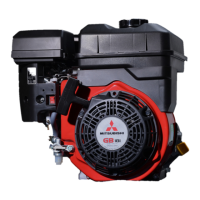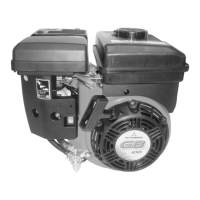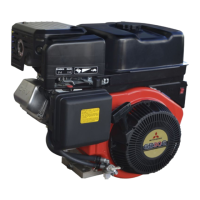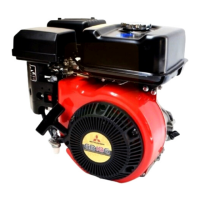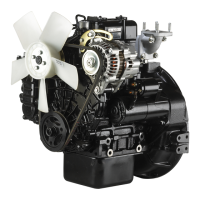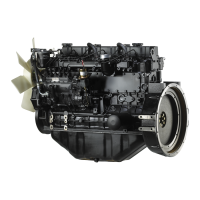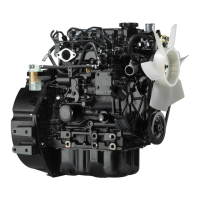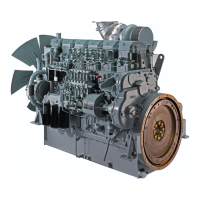
Do you have a question about the Mitsubishi GB290 and is the answer not in the manual?
| Displacement | 296 cm³ (18.1 cu. in) |
|---|---|
| Bore x Stroke | 76 mm x 65 mm (2.99 in x 2.56 in) |
| Fuel System | Carburetor |
| Ignition System | Transistorized magneto ignition |
| Starting System | Recoil starter |
| Max Power | 3600 rpm |
| Engine Type | 4-stroke, single cylinder, forced air-cooled gasoline engine |
Explains the manual's purpose for correct and safe engine operation.
Precautions for handling, storing, and using gasoline to prevent accidents.
Important safety points for operating the engine correctly and safely.
Location and importance of the engine identification number for parts and service.
Guidelines for using clean, fresh, unleaded gasoline for optimal performance.
Guidelines for checking, changing, and using the correct engine oil type.
Checks fuel presence/quality and air cleaner condition before starting.
Verifies engine oil level/condition and fastener tightness.
Checks for debris, leaks, and verifies component cleanliness.
Procedures for operating fuel cock and engine switch to start.
Adjusting speed control and choke levers for starting.
Instructions for starting via recoil or electric starter.
Adjustments after starting and how to stop the engine safely.
Table outlining periodic inspection and maintenance tasks.
Inspecting bolts, fuel/oil leaks, and general component condition.
Procedures for inspecting and cleaning the air cleaner element.
Importance of a level, well-lit area and avoiding hazards during inspection.
Detaching spark plug wires and avoiding hot engine parts.
Precautions for fuel handling, spills, cleaning, and speed adjustment.
Tasks to perform before starting the engine, like adding oil.
Inspecting and cleaning engine components for optimal performance.
Procedures for inspecting and maintaining the air cleaner element.
Procedures for changing engine oil at specific hour intervals.
Regular cleaning and inspection of spark plug and fuel cock.
Draining fuel from carburetor and tank to prevent issues.
Oiling cylinder, turning crank, and replacing spark plug.
Wiping engine, avoiding water, and choosing a dry storage location.
Checks for ignition problems preventing engine start.
Verifies engine compression and spark plug tightness.
Checks fuel supply to the combustion chamber.
Provides CO2 emission values and user information requirements.
Lists URLs for EU regulations related to exhaust gas emissions.
Identifies the manufacturer and authorized representative.
Describes the engine and its compliance with EU directives.
Precautions against fire, explosion, and electrical hazards.
Keeping clear of moving parts and ensuring engine stability.
Safety guidelines for exhaust, hearing, and overall operation.


